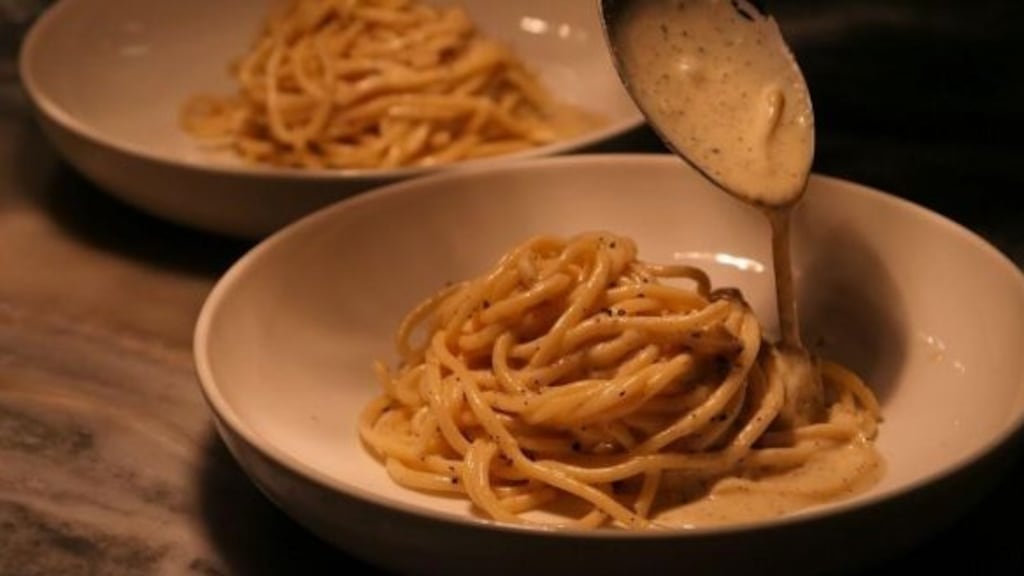Food is essential fuel for survival. But in troubled times it can be more than that. It can give us comfort, allow us to experience the joy of sharing, and for some it is a source of inspiration too.
But even the best cooks need ingredients – and many people have been stockpiling since the coronavirus outbreak. But what are the best foods to stock up on? And how many different ways can you use them?
Here is a collection of things to stock up on, and some interesting ways to use them.

We all need to eat healthily, and that might become more of a challenge as circumstances, global and personal, change in the days and weeks ahead.
TAKE STOCK
Before you head to the supermarket, take stock of what you already have in your fridge and cupboards. Stockpiling is not recommended, and many of us are operating on curtailed budgets too.
Included below is a handy shopping checklist to get you started. We will assume you’ve bought coffee, tea, sugar and milk (dried and UHT for emergencies), because without those, the days cooped up at home will seems very long for most of us.
WHAT TO BUY
LONG-LIFE FRESH STUFF
Eggs: Buy plenty of eggs, and if you need at any stage to check if they're fresh enough to use or not, do the float test; you can read about it here. You can also apply common sense, crack one open and if it smells bad get rid of it.
Vegetables: Stock up on the stuff that lasts a long time such as potatoes, carrots, parsnip, turnips, cabbage, beets, squash, onions, garlic and fresh ginger. You can pop the ginger in the freezer along with a few fresh chillies and grate them from frozen. Citrus fruit lasts well too, so buy oranges, lemons and limes. If you are in doubt about what needs a space in your probably already packed fridge, read this guide.
Herbs: Small pots of basil, parsley, thyme, rosemary and mint do well on a sunny windowsill and will bring a welcome freshness to your cooking when you need it most. Skip the coriander though; it's a diva prone to wilting after a few days, in my experience. Frozen coriander is a good alternative.
Cheese and butter: Parmesan, and a big block of a hard cheese such as Cheddar will make all those pasta nights a lot tastier. Butter disappears surprisingly quickly too when you're house-bound.
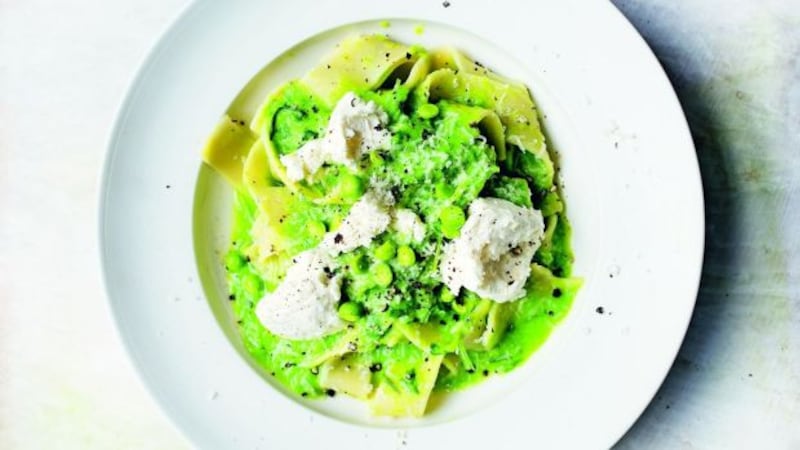
LARDER STAPLES
Pasta and rice: Pasta is back in stock most places. Buy a variety of shapes to avoid monotony. The same with rice, throw a bag of pudding rice into your basket alongside the basmati and you have the backbone of a comforting retro-style baked pudding.
Lentils and legumes: When you start to run out of meat and fish, these protein powerhouses will be very useful. Buy them dried and they will be tastier and a lot cheaper, but tins are useful too. Chickpeas (yes, you probably will be cooking #thestew at some stage), lentils, and kidney, cannellini and butter beans are all useful, as are a few cans of mixed beans for chillies and salads. Surprising fact: peanuts are also a legume.
Flours, sugars, dried yeast: Check stocks of what you usually use and replenish as needed.Chances are you might be doing a bit of baking. Lots of delicious and quick treats by our baking writer Vanessa Greenwood can be found here.
Spices and oils: Now is a good time to clear out the spice rack and replace anything that is so out of date it has lost its pungency. If you're starting from scratch buy cumin, coriander, thyme, oregano and smoked paprika. Check for salt and pepper too, and an oil for cooking with and another for drizzling. Curry pastes will be useful too. And buy a jar or tub of tahini – you'll never buy hummus again once you make your own.
Tins: No, you do not need 24 tins of tomatoes and the same of chickpeas, but if you have them, scroll down for ways to use them. Buy lots of coconut milk too and stay away from the low-fat stuff, just add water to the full-fat instead. Tuna, sardines and anchovies last forever and can be used in lots of ways. Tinned fruit (in juice rather than syrup) will be useful too, for puddings and treats. We recommend pineapple, so you can make Vanessa Greenwood's gorgeous pineapple upside down cake.
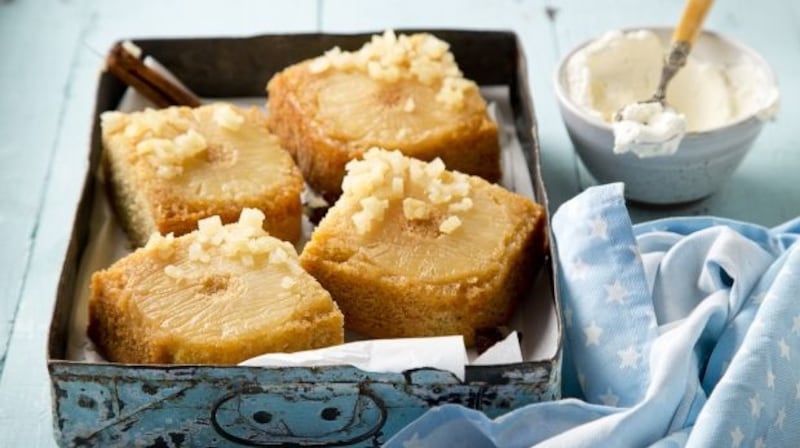
RECIPES: FROM SOUPS TO QUICK PASTA TO BREAD
Here is some recipe inspiration to file away for those long days ahead, in the hope that your cooking might bring you joy as well as nourishment.
DAILY BREAD
We are obsessed with having access to this particular carb during times of crisis. It doesn’t keep well, except in the freezer, where it will be fine, so it is a good idea to have a couple of simple recipes to hand.
With time on your hands you could embark on a sourdough from scratch project, going from making your own starter to baking a load. We have a sourdough starter and loaf step-by-step guide from Patrick Ryan of Firehouse Bakery if you're up for the challenge.
An easier approach is the pint glass loaf from Peter Ward of Country Choice deli and food shop in Nenagh, who famously sent his son off to college with a pint glass. No, not for that purpose, but so he could make this bread. You can watch Peter making it here. The recipe is simplicity itself.
Don’t have buttermilk to hand? Make your own by adding one and a half tablespoons of lemon juice or vinegar to three quarters of a pint of ordinary milk and let it sit for 10 minutes at room temperature.
PETER WARD’S PINT GLASS BREAD
Ingredients
Pint glass of wholemeal flour
Pint glass of white flour
Three-quarters pint of buttermilk
Enough salt to coat the bottom of a pint glass
Enough bread soda to coat the bottom of a pint glass
1 tbsp butter
Method
1 Mix dry. Add wet. Shape and bake in a preheated oven, at 190 degrees Celsius for 15 minutes, then at 200 degrees for a further 25-30 minutes. Cool on a wire rack.
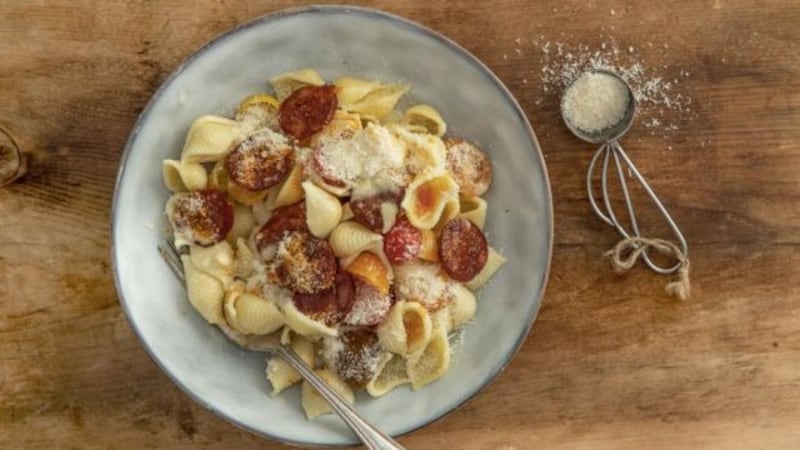
PASTA FASTA
That's the bread sorted, now on to tackling the mini mountain of dried pasta many of us have accumulated. Chef Paul Flynn has been coming up with some brilliant, family-friendly pasta recipes in his Irish Times column, and a recent winners with readers is his orecchiette with chorizo, cherry tomatoes, cream and Parmesan (if you don't have the "little ears" orecchietti use any sturdy short shape, penne is fine). You can see all of Paul Flynn's very family friendly recipes here.
Nigel Slater shared his peas, papardelle, Parmesan recipe with us, and it's another store cupboard triumph.
But what could beat Michelin-starred spaghetti Alfredo ready in 10 minutes? Here is the recipe from chef Keelan Higgs of Variety Jones restaurant in Dublin.
SPAGHETTI ALFREDO
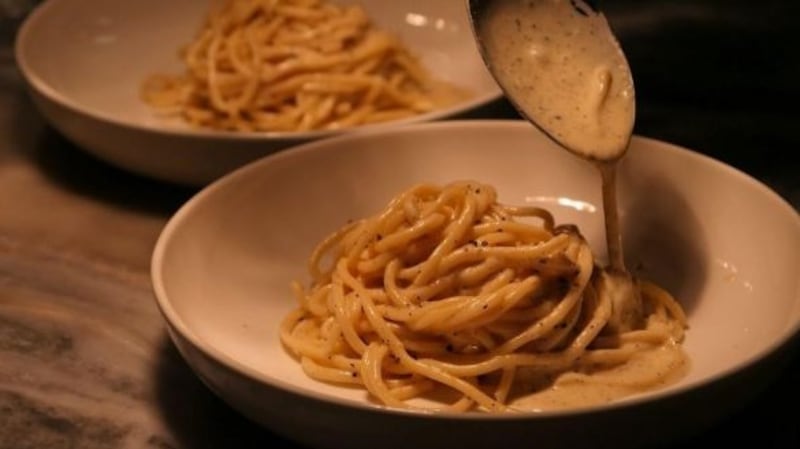
Serves 2
Ingredients
240g dried spaghetti
2/3 tsp freshly ground black pepper
50g salted butter
50ml fresh cream
35g freshly grated Parmesan cheese and more cheese to grate over the to
Method
1 Fill a pot full of water, add two tablespoons of salt and bring it to the boil.
2 Drop the spaghetti in and stir a few times to make sure the pasta doesn't stick together. Depending on the brand of pasta, the spaghetti should take six to eight minutes, you want to serve it al dente, or with a slight bite to it.
3 In the meantime, put a pan on a medium heat and add the black pepper, move it around for a few seconds, you should start to smell the pepper a bit as its natural oils are released.
4 Next add the butter and a good three to four tablespoons of the water the pasta is cooking in. Allow the butter to melt and stir, so it emulsifies with the water. Add the cream and bring to a simmer for 30 seconds or so then turn the heat down and add the grated cheese. Stir the sauce until the cheese has melted. At this stage the pasta should be just cooked.
5 Strain the pasta and add to the sauce, toss the pasta in the sauce until well mixed in. If you feel the sauce is too thick add a spoon or two more of the pasta water.
6 Serve in a bowl topped with more grated Parmesan and a twist of black pepper.
SOUPER DOOPER
It's likely that at some stage you will have a bunch of sad looking vegetables to use up.
My suggestion (and I make this every week) is to saute some diced onion and carrot and a finely shredded leek in butter or oil until soft. Add a tin of chopped tomatoes and a tin of chickpeas, lentils or cannellini beans, a big mug of chicken stock (cube is fine), half a teaspoon of smoked paprika, a big teaspoon of nice vinegar and a really vigorous splash of Worcestershire sauce. Add some finely shredded spring cabbage if you have it and simmer until the veg is soft. Season with salt and pepper and serve drizzled with your best olive oil.
For something more creamy and luxurious, this butternut coconut soup by Lilly Higgins is delicious.
BUTTERNUT COCONUT SOUP
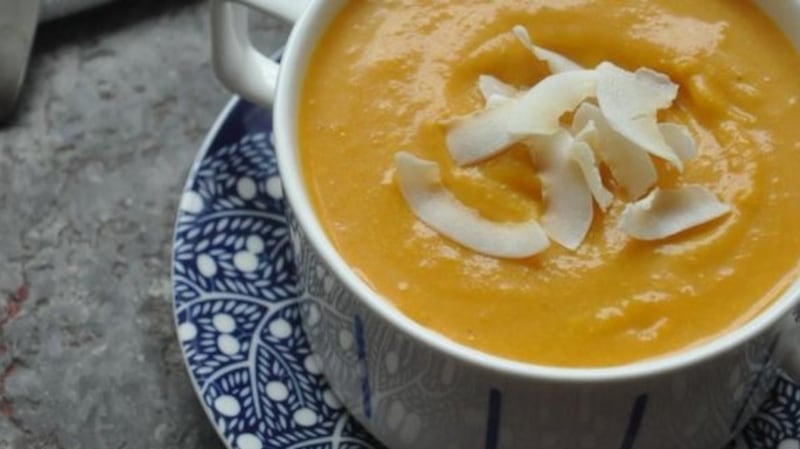
Serves six
Ingredients
1 butternut squash
2 medium-sized sweet potatoes (use ordinary potatoes of that's all you have)
1 thumb-sized piece of ginger
2 cloves of garlic
1 tin coconut milk
Butter
Salt
Pepper
Method
1 Halve the butternut squash; remove the inner seeds with a spoon and discard them. Peel and then roughly chop. Peel and chop the sweet potato. Peel the ginger and slice it. Peel the garlic cloves and bruise them by crushing with the flat of a knife.
2 Melt two tablespoons of butter in a heavy-based pan. Add the ginger and garlic and leave to cook for a minute before adding the squash and sweet potato.
3 Stir everything well to coat in the butter. Add 500ml of water or stock and bring to the boil. Lower the heat and simmer until the vegetables are tender. Add the tin of coconut milk. Blitz until smooth and season to taste. Sprinkle with coconut chips or fresh coriander before serving.
TOO MANY TINS OF CHICKPEAS?
If you've still got chickpeas to use up after #thestew, make a batch of hummus in minutes. Put a can of drained and rinsed chickpeas into a blender (or a Nutribullet) with a clove or two of garlic, a couple of heaped tablespoons of tahini, the juice of a lemon and some salt. Add three or four large ice cubes (this is the clever bit, it gives you a really light and non-claggy result). Blend till very smooth. Add more ice or iced water to get the consistency you like. Scoop out into a bowl and drizzle generously with good quality extra virgin olive oil, and sprinkle some smoked paprika, or cumin, over the top, if you like.
